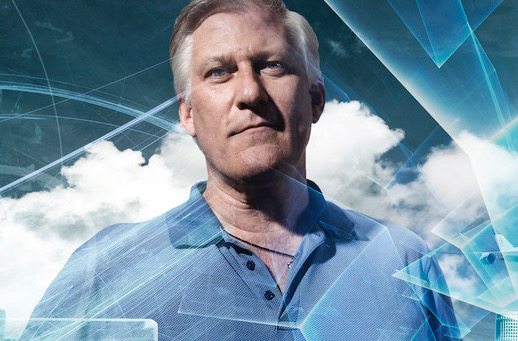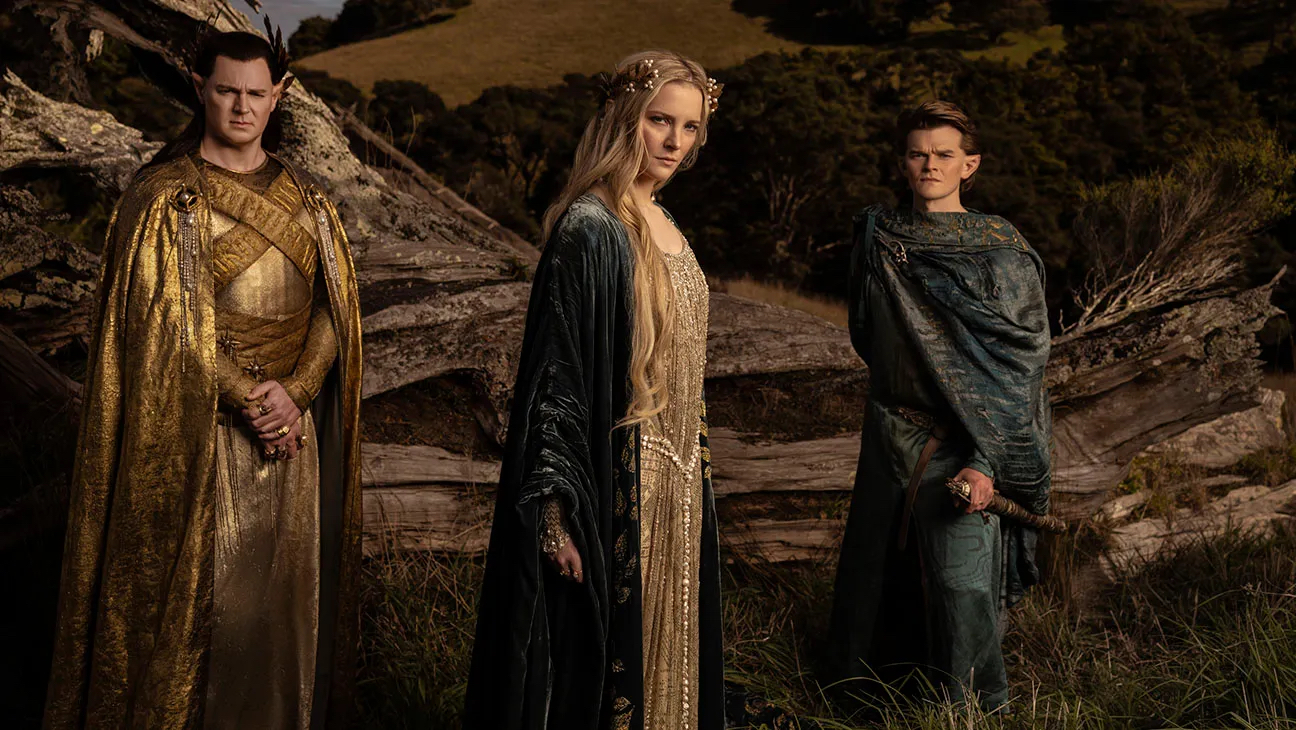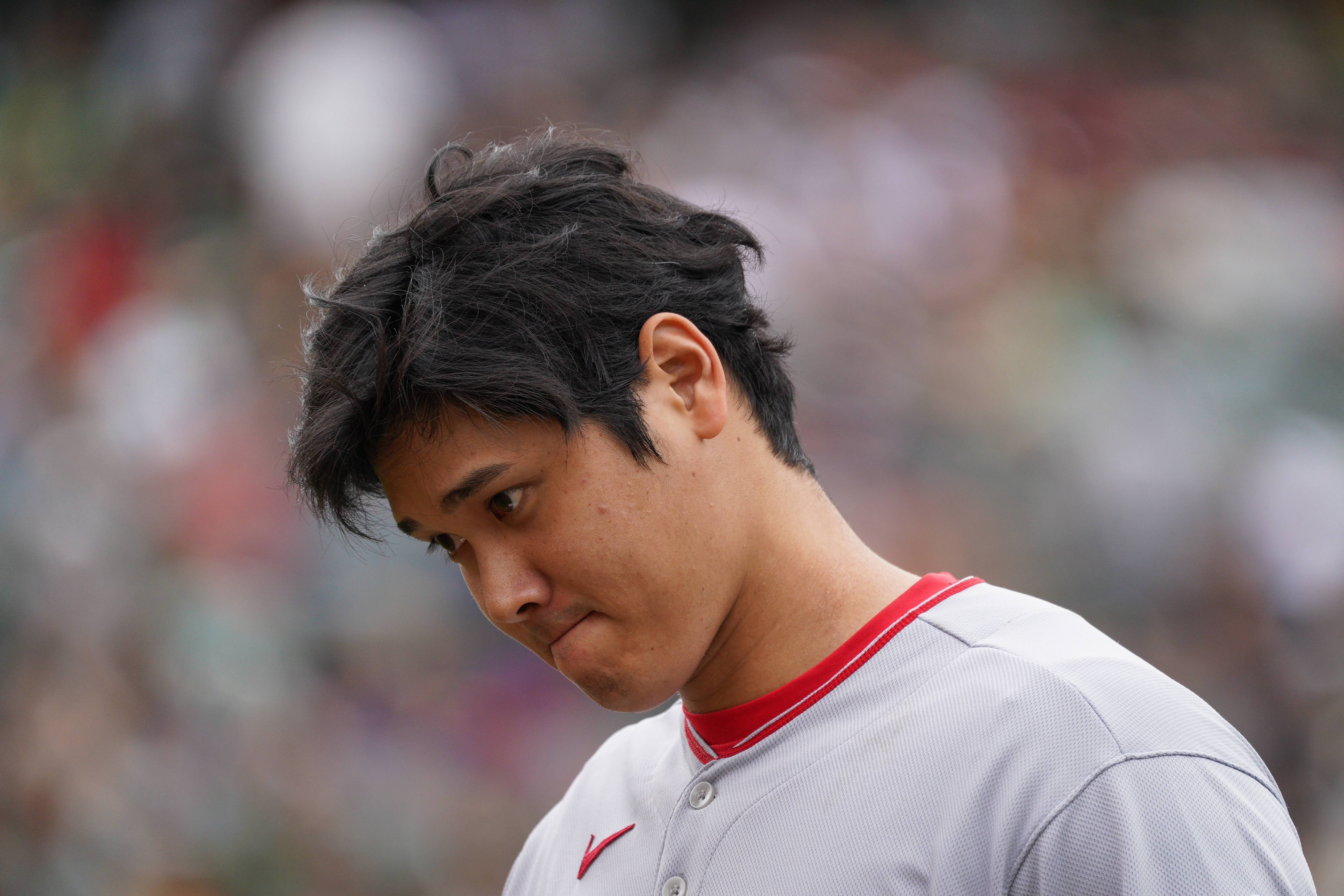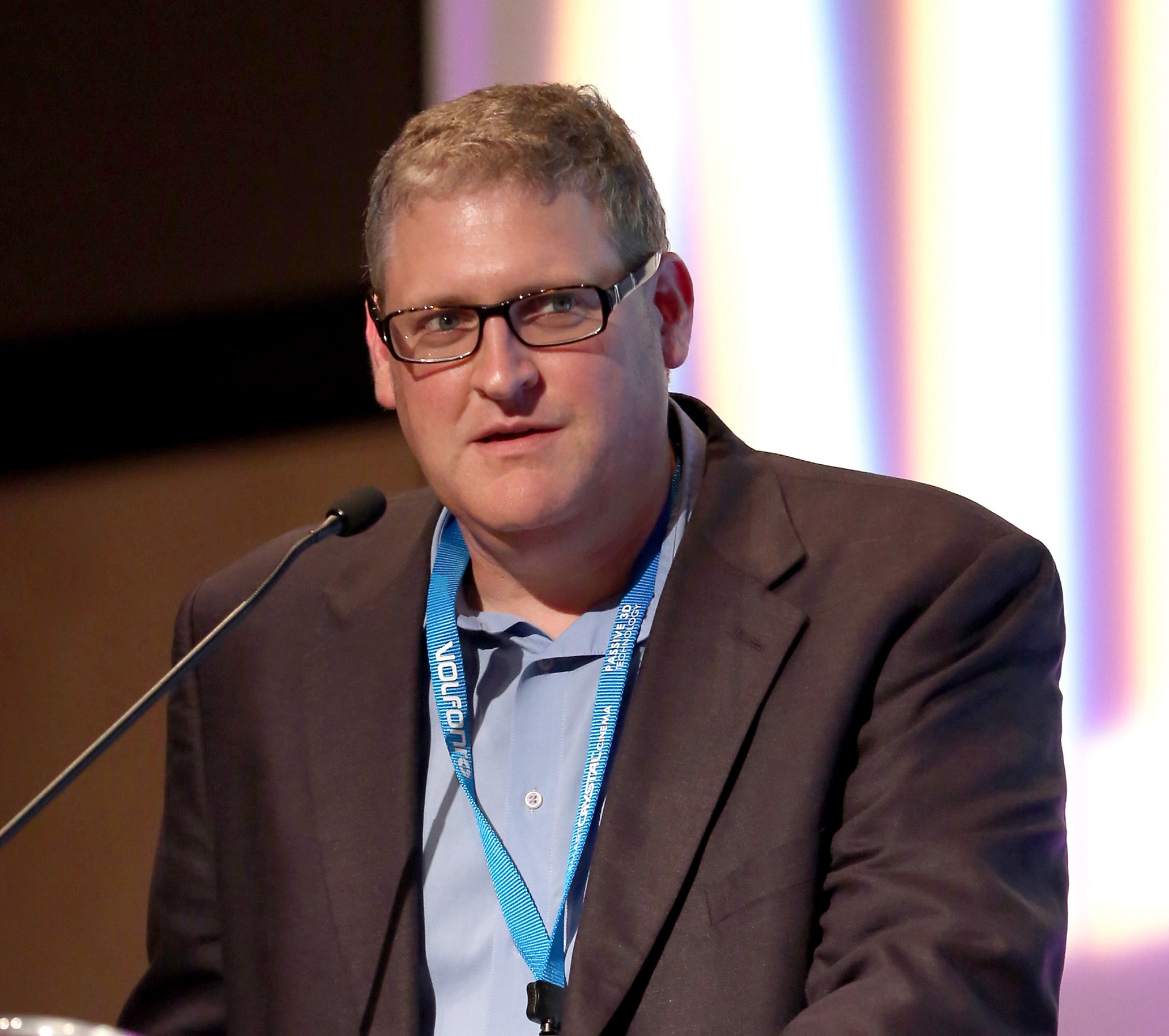Why Shohei Ohtani and His New $700 Million Dodgers Deal Aren’t Too Rich For Still Thriving RSN SportsNet LA
In this week’s Next Text, we also discuss why Adam Silver and the NBA should pop the ol’ bubbly on their wildly successful In-Season Tournament

Each weekend, Next TV writers Daniel Frankel and David Bloom head to various gun conventions and shooting ranges to reinforce their masculine self-images, as well as consolidate and soothe a simmering rage they can't articulate. When they're done, they conduct a sometimes lively and interesting text exchange about technology, media and telecom.
Daniel Frankel: Greetings, David, from lovely Lake Arrowhead, Calif. I'm here in this mountain town, chilling at my lifelong Canadian pal’s A-frame, ready for a weekend of televised pro sports, Labatt brews and Canadian whiskey. There’s also usually a lot of Maple Leafs hockey when you stay at Tony’s cabin. It's pretty dry, sunny and warm (at least during the day) before the winter deluge starts in a few weeks or so. Speaking of deluges, we're certainly not seeing any of them any longer in terms of original programming from basic cable networks, as Friday’s solid “zombie networks” story in the New York Times points out. I don’t know that the art of breezy, whimsical 40-minute-long USA Network comedy-dramas and TLC reality shows is necessarily is necessarily lost, per se. There are plenty of SVOD and FAST places to find those types of shows. But reading that story, I had the thought that the pay TV ecosystem, circa 15 years ago, is kind of the place where we’re all trying to get back to. Plenty of easily searchable choices, with on-demand options via DVRs. Sure, the commercials ultimately got out of hand … but maybe we'll be saying that five years from now with ad-subsidized SVOD. Made me wonder, as consumers, did we end up stepping back instead of forward with streaming?

David Bloom: It’s early on the step-back thesis, but I’d say DVRs/on-demand from 10 to 15 years ago was a halfway step toward where we are now. Things shuffled on and off the on-demand offerings of cable operators too, but it was less piercing somehow for such things to happen. I think the next step is less about getting the kinds of shows for which you demonstrate such nostalgia, and for the rise of the joint debut. By that, we’re already seeing some media companies promoting their shows (and NFL games) as available on both CBS and Paramount Plus, or NBC and Peacock, etc. Out of such things do we get programming that works wherever the consumer audience is, instead of wherever the next great hope of a business model beckons. We still have tens of millions of people watching way too many ads on networks, but not having many reasons to stick around. The joint debut eases that pressure, but still represents a more nuanced and forward-thinking distribution approach beyond what we saw in the first few years of the Streaming Era.

That said, I ran across a point made by someone puzzling over Amazon’s latest unusual approach to its many streaming offerings. It has Freevee, the dopily named free streaming service paid for with ads. For more than a decade, it has had ad-free Prime Video. Now, ad-free will cost you more, while the basic free Prime Video service will be ad-supported, possibly quite a lot of ad support, given that Amazon already is the No. 3 digital advertising platform, generating more than $31 billion last year there. So, if Prime Video is supposed to be something you get as a benefit of buying the Prime membership, and now it’s costing you more or you get less, what’s that value proposition? Could Amazon have avoided this sort of cognitive dissonance just by, oh, I don’t know, not spending half a billion dollars on that Lord of the Rings spinoff, or some of the other lavishly financed, moderately successful swings on programming it’s taken the past few years?

Frankel: In the immortal words of the somehow underrated Johnny Lydon, David, I could be wrong, David … but I could be right. Amazon will own video in 10 years. The amount of money my family saves every year through flat-rate shipping via Prime membership would probably stagger me. And conversely, it wouldn’t surprise me to hear that Amazon gives the video side of our Prime relationship not that much thought at all. They know I’m not quitting their store any time soon!
Conversely, I quit ESPN Plus this week.
The smarter way to stay on top of the streaming and OTT industry. Sign up below.
I already get linear ESPN via my vMVPD. I don't need ESPN Plus video. And I've never been able to properly unlock espn.com premium digital content via my ESPN Plus subscription due to some technical bug. I finally dealt with it this week when I learned that Hulu has been integrated into the Disney Plus app, and you can get the Disney Bundle as a $19.99 “duo” as opposed to a $24.99 “trio.” The dumb part — you can’t get the duo if you sign up for the Bundle via Hulu (as I did several years ago). I had to quit my Hulu service subscription and sign up anew via Disney Plus. In order to do that, I had spend an hour on the phone with Disney’s Far East call center. Why oh why would a smart company like Disney make this so complicated?
Bloom: I think Disney is making this complicated because they’ve learned an important lesson from their traditional cable TV distribution partner/antagonists. That lesson: don’t make it easy to get out, and especially don’t simplify the value proposition so much that customers can understand when they’re, to use the technical term, getting screwed. You really don’t want customers feeling so empowered that they’ll take action and do what you did (and which more and more are doing routinely).
Also read: ESPN Plus, Hulu To Stream 75 Live NHL Regular-Season Games
I certainly understand the impulse to dump ESPN Plus. I’ve been calling it “ESPN Minus” for a very long time. It just doesn’t have much of anything that even a modestly engaged sports fan would want. There are way too many matches featuring non-revenue sports from lesser Directional State Colleges to create any must-watch experiences. And that’s even with the welcome rise in interest in college men’s baseball, women’s softball and basketball, and occasionally other sports such as gymnastics. But the only reason to charge people for this stuff is because you want to get them in the habit of doing so when it really matters.
Also read: It’s Time? ESPN Making Real Plans To Stream ‘Flagship’ Cable Channel Direct-to-Consumer
Of course, all of this ESPN palaver is just prelude to the big event, when ESPN actually earns its plus, gives up on pretensions of maintaining any position on cable boxes, and goes direct with all those massive sports rights it keeps behind the MVPD veil. But that likely won’t happen until 2025, the company has signaled. In the meantime, we get to watch the ramped-up speculation about whether Shari Redstone will finally sell off Paramount Global, possibly to another rich family, in this case, Hollywood mini-mogul David Ellison and his dear old pa, Larry, one of the world’s four or five richest men. Honest, Larry, it’s still better than TikTok, which your company already services in the United States.
Frankel: Sorry for the delay getting back to you — I was out in the streets of Lake Arrowhead, partying and turning over cars Saturday night after the Lakers' stirring In-Season Championship win. (Honestly? Meh … but more on that in a moment.) for now, wondering … with about 15 seasons left on the Dodgers’ 25-year, $8.35 billion regional-sports-network deal with Charter — an agreement that might not even make the 9th inning given the way the RSN biz is going — how oh how do they afford $700 million over the next decade for the Shohei Ohtani? That's about three times as much as they were paying their previously highest paid player, Mookie Betts (you can see the Dodgers' 2024 player salary breakdown here).

Bloom: Both the Dodgers and Yankees have consistently had among baseball's biggest payrolls, in part because their near-unique regional sports networks still pay them oodles of cash. The Yankees own the lion’s share of YES Network, which is a seemingly immutable fixture of the tri-state metropolitan media landscape (Amazon's minority ownership doesn’t hurt). And the Dodgers’ SportsNet sugar daddy is owned by Southern California’s dominant cable operator, Charter Communications, which is literally invested in the continuing success of this specific RSN. SportsNet’s largesse certainly will continue with Ohtani’s signing. If anything, SportsNet became way more valuable. And Ohtani is not just a charismatic and talented player, he’s multiple-generations unique, doing things even Babe Ruth didn’t do a century ago, pitching and hitting in Boston before that fateful trade to the Yankees. On top of that, while Ruth was one of his era’s biggest pop culture stars (he has a candy bar named after him), Ohtani is massively popular in a way Ruth never was: he’s gigantic overseas, especially in booming Asian markets such as Japan and Korea, as well as with California's 6-million-strong Asian population, the nation’s largest. Ohtani’s unique brilliance and social-media savvy are also dragging younger fans back to baseball along with new rules that have created shorter, more interesting, and more diverse games. The Dodgers’ consistent success should routinely put baseball’s biggest star in the playoffs, and on the world stage. MLB officials must be very, very happy.
Frankel: I agree, Southern California is a great market for Ohtani, and the Dodgers are far more likely to maximize his extraordinary talent and value than Angels billboard-king owner Arte Moreno ever could. I've been a fan of the Halos since the days of “Tanana and Ryan and two days of cryin.’ ” Lived through the collapse of ’82, the absolute devastation of Dave Henderson's Game 6 blast off the late Donnie Moore in ’86. I nearly broke bones jumping into a drunken pile of joyous humanity when they finally broke through against S.F. in ’02. But Anaheim Stadium has been dead for 20 years. This feels right. One thing I'm not going to risk my liver or a trip to urgent care for is the In-Season Tournament. Granted, my perennially disappointed Leaves-loving friend Tony hasn't experienced any championship joy in his lifetime. But this lifelong NHL wonk did know enough about winning and the value of a contrived regular-season trophy to righteously mock our “NBA Cup” all weekend. As a serious Lakers wonk, I honestly didn't know what to make of that win Saturday night.

Also read: It Works! NBA In-Season Tournament Generates 20% November Ratings Spike for ESPN
Bloom: I’m so glad you avoided burns or other injuries during the IST post-championship celebrations, though I know you’re good in a scuffle. The ones who really should be setting bonfires and tipping cars, though, are Adam Silver and other NBA executives. The In-Season Tournament will certainly be a lucrative new piece of the league’s TV rights negotiations, with Amazon among those expressing keen interest. The level of gameplay was remarkable (the ageless LeBron James was only one of many players who stepped up their intensity). Fans loved it, advertisers loved it, ratings were up, and there was finally a reason to care about an early-December NBA game. It even gave LeBron some bragging rights: Michael Jordan never won an IST championship and MVP trophy. Soon enough, the league will cash in big.
Daniel Frankel is the managing editor of Next TV, an internet publishing vertical focused on the business of video streaming. A Los Angeles-based writer and editor who has covered the media and technology industries for more than two decades, Daniel has worked on staff for publications including E! Online, Electronic Media, Mediaweek, Variety, paidContent and GigaOm. You can start living a healthier life with greater wealth and prosperity by following Daniel on Twitter today!

